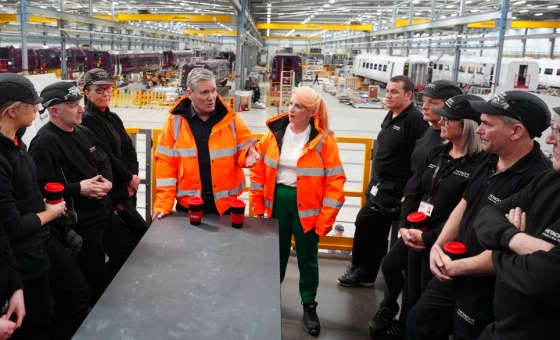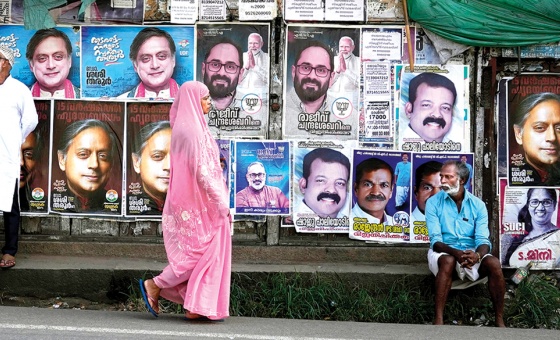This is the last article you can read this month
You can read more article this month
You can read more articles this month
Sorry your limit is up for this month
Reset on:
Please help support the Morning Star by subscribing here
I’D BE surprised if you hopped out of bed last month eagerly anticipating the joy of thumbing through the rail regulator’s financial report for last year.
I’d be amazed if you’d sat in your jim-jams reluctant to attack your boiled egg before you had perused a few columns of figures from the Office of Rail Regulation.
It’s one of those exercises you want someone else to do for you, just leaving you with a few handy facts.
Hopefully, this article will serve this purpose. In fact, here are three numbers you might like to scribble onto your cuff: £204 million, £707m and one.
The first is how much money was taken away from the railway to pay dividends to shareholders last year.
The second is the surplus if you take away the total income (from both the service and the government) from expenditure to run our railways. And the third figure is, considering the information above, how many railway companies we should have in Britain.
If the railways had a spare £204m it would not be difficult to find ways to spend it on things the public would like — lower fares, more seats, new trains. That sort of thing.
The current system, however, takes this money and hands it over to people with no interest in rail at all — people who do nothing to the industry apart from take money out and put it into their own pockets.
It is ludicrous that managers and politicians wring their hands and say how sad it is that there is not more money to invest in rail when they happily endure a system that sees money taken out of the till by disinterested and inactive bystanders.
Similarly, if the public had a spare £707m I’m sure we could think up some way of spending it.
I’m not just talking about improving the railways, although this would be nice.
But there are one or two other areas where public funding would not be especially unwelcome, don’t you think? Things like creating jobs, improving health or boosting education?
Well, last year the railways provided a surplus of this amount.
It’s not a straightforward figure. I don’t suggest that the railways make a profit without public subsidy.
But I am fascinated about what happened to the money. It seems to emerge from the Treasury with great pomp and announcement, hang around railway stations for a few weeks, and then slip back into government coffers late at night by the back door.
Then there is the figure one.
This is precisely the most efficient number of railways it would be wise to employ in this country. The reasons are so blatant it seems too obvious to list them, but here’s a few.
Rail is a national network, so it needs not competition, but co-operation in order to provide an integrated network.
L
ook at it this way. You want to go to Blackpool from London, so you know you have to change trains at Preston.
Who do you think will be most likely to organise a seamless journey for you, with least waiting time? Would it be a public rail service specialist or a quick-buck speculator with interests in one of the lines?
Which leads me to my next point.
Public services can’t be assessed or valued like tins of beans. Rail isn’t just a service to passengers.
Because of rail travel, roads have fewer cars and lorries, the atmosphere has less pollution and fewer people die in transport accidents.
Rail needs a different approach than that offered by the simple-minded column-checking free-marketeers.
Yet passengers do pay their share. Increasingly so, in fact.
Passenger income increased by 3.6 per cent compared with last year, and over 7 per cent compared with the year before.
And the figures from the ORR reveal that if the present funding system was retained, but the service was in public hands, fares could be reduced by 9.2 per cent. This is not speculation. It is a fact.
There is one section of the railway that is doing the public proud, and that is the East Coast Main Line.
Since the franchise holder walked away moaning about insufficient profits, it has been run as a public service.
The ORR report shows that it ran an efficient service with excellent punctuality and reliability and made a surplus of £16m, which went back into public coffers.
So what lessons are to be learned from this?
If you are a Tory, it is that you should sell off the East Coast Main Line to your mates so they can pocket the profits rather than the taxpayer. In fact, so keen are they that they intend to sneak this in before the next election.
If you are a rail passenger, it’s rather different.
There are more rail passengers every year — 2.9 per cent more compared with last year and 10.4 per cent more compared with the year before that.
That is a lot of people whose lives can be improved by returning rail to public ownership even based on the ORR’s financial assessment, quite apart from the social advantages of a reliable and efficient rail service.
There’s 50 pages of the regulator’s report you can trawl though to confirm all this. Alternatively, you can just remember the three figures I mentioned at the start of this article, spice with a hint of common sense and reap the benefits of a railway without the massive costs of private dividends and obscene franchising expenditure.
As a matter of fact, we can even save money on the rail regulator who wrote the report!
Mick Whelan is general secretary of Aslef.









